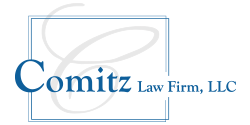Every year over one million people in the U.S. go to the emergency room due to a slip and fall accident. That’s more than two thousand people each day.
Where slips and falls occur
Slips and falls resulting from them can occur in a wide variety of settings. The following list provides some examples of locations that can present a slip hazard.
- grocery stores
- restaurants
- bars
- gyms
- nursing homes
- restrooms
- shopping malls
- swimming pools
- movie theatres
- sports stadiums
- sidewalks
- parking lots and garages
Slip and fall injuries
Among other things, falling can result in:
- broken bones
- sprained ankles or wrists
- cuts and bruises
- torn ligaments
- shoulder dislocations
- spine and nerve damage
- traumatic brain injuries
Some of the injuries can be life-altering.
Liability for Slip and Fall Accidents
In Pennsylvania both private individuals and business owners have a duty to maintain their premises in reasonably safe manner.
In order to prevail in a slip and fall lawsuit the plaintiff must prove the following
- Duty – The defendant owed a legal duty to the plaintiff;
- Breach – The defendant breached that legal duty by acting or failing to act in a certain manner;
- Causation – The plaintiff’s injury was caused by the defendant’s actions (or inaction); and
- Damages – The plaintiff was harmed or injured as a result of the defendant’s actions.
Complexity in Slip and Fall Lawsuits
There are a number of issues which can add to the complexity of these type of cases. The defendant’s particular duties are dictated by his or her classification – invitee, licensee or trespasser. The duty of care owed to the latter is very low, as the possessor of the land need only refrain from willful, wanton or reckless conduct that could harm a trespasser. If the injury takes place in a government building, the plaintiff may encounter immunity claims by the governmental agency. In Pennsylvania, plaintiffs must contend with the state’s unique Hills and Ridges Doctrine which holds that there is no liability created by a general slippery condition on sidewalks. Finally, a plaintiff’s action or inaction may have contributed to his or her own injury. For example, the plaintiff may have been wearing inappropriate footwear at the time of the fall. This will not bar a recovery by the plaintiff as long as such negligence was not greater than the causal negligence of defendant or defendants.
If you or a loved one have been seriously injured in a slip and fall accident, call Comitz Law at 570-829-1111 or email info@comitzlaw.com to speak with an experienced personal injury attorney.


